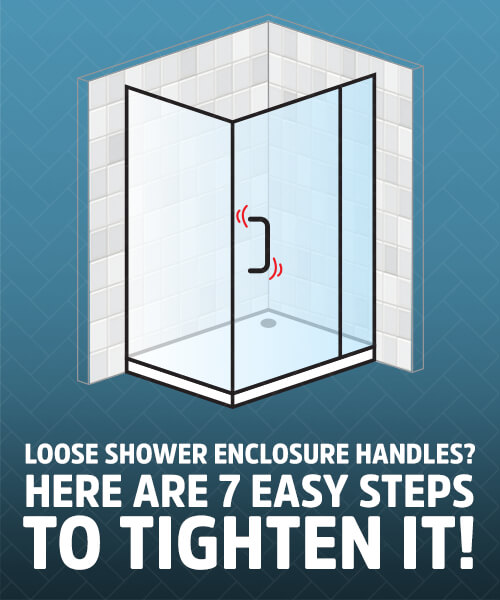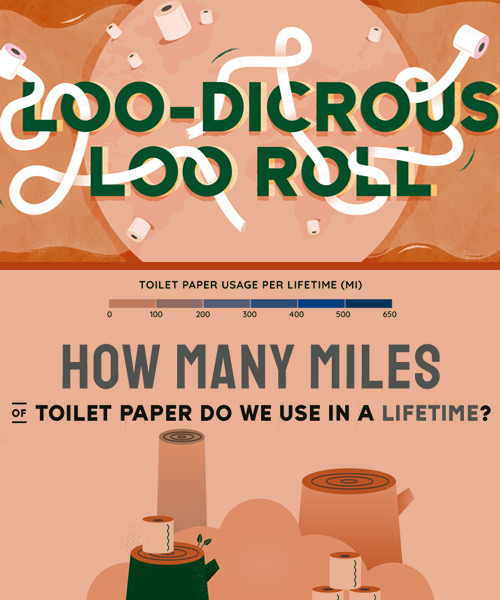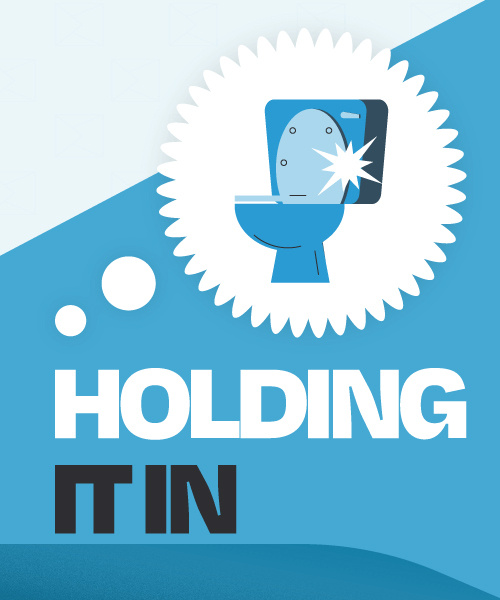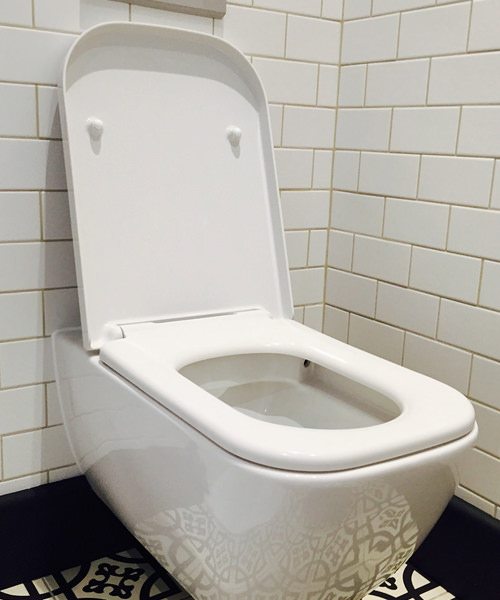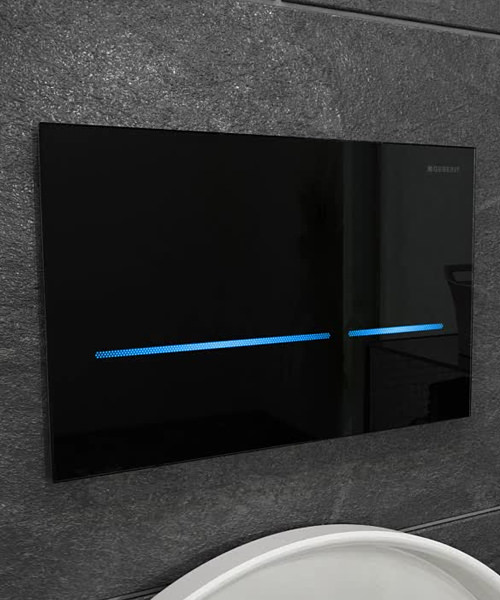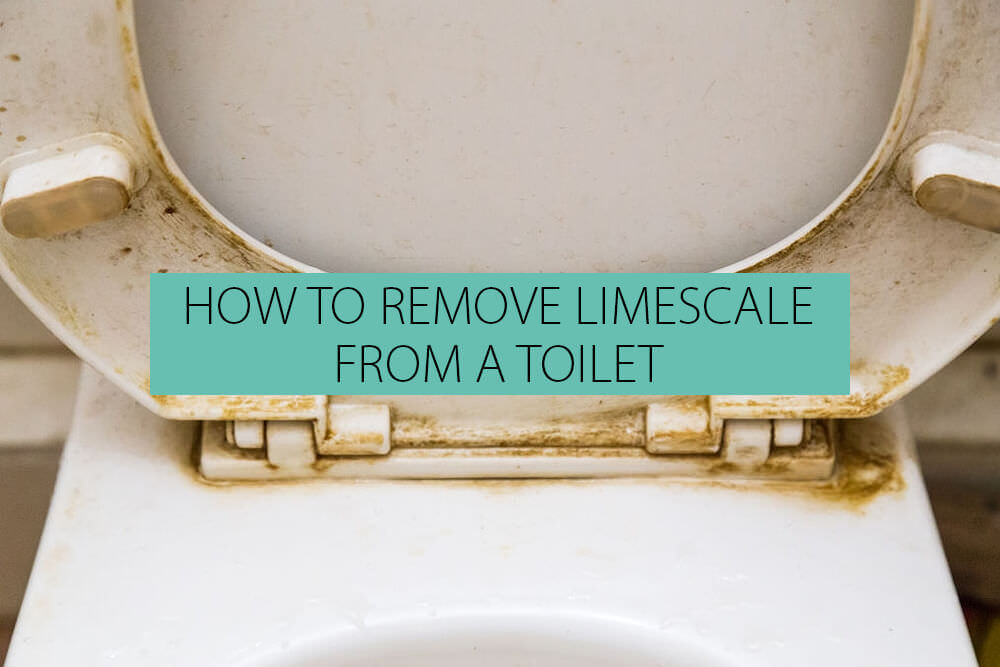
If you have hard water in your home, then you likely have limescale build up on your faucets, showerhead, coffeemaker, and your toilet. This chalky, offwhite substance is both unsightly and something that can clog up your water appliances over time if it’s not being removed with regularity. Limescale can be tough to remove, however, especially if you have a lot of it or it’s been building up over a long period of time. Thankfully, while difficult, it can be removed, and you can restore your toilet to its previously pristine and perfect working condition within a few hours time.
What Is Limescale?
Limescale is a crust that develops on anything that your water passes through or comes in contact with. It can appear at first as a film, or a water deposit that doesn’t rinse away. Over time, it becomes a discoloration, then begins to build into a chalky, flaky crust that eventually becomes hard and craggy to the touch.
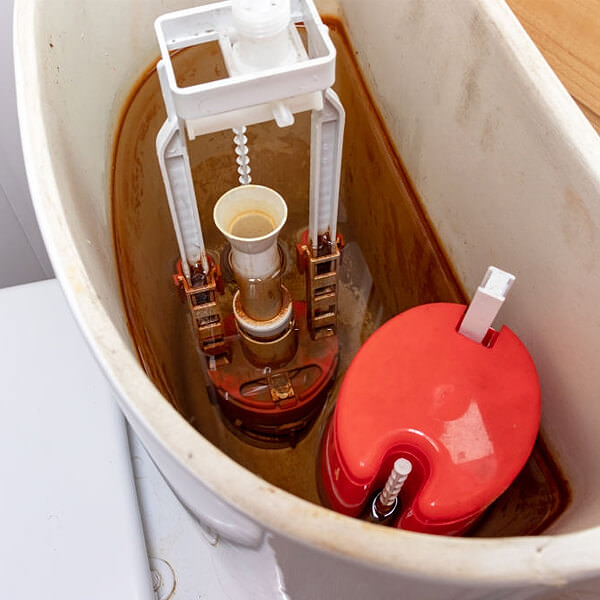
This build up is caused by a deposit of calcium carbonate that the water leaves behind as it evaporates. On its own, it’s fairly harmless as well as naturally occurring depending on where it is that you live. At times it’s been estimated that more than 70% of all households in the UK will deal with hard water and limescale at some point in time. You’ll notice it in the early stages because your soap may not suds properly and you may have difficulty getting your dishes and laundry clean.
The best way to deal with the issues caused by hard water and limescale is to use a water softener that adds either salt or potassium to your water. This system is installed right where the water enters your home, so it doesn’t have a chance to go through your pipes. The water softening system counteracts the calcium carbonate, and helps prevent that crust from building up in your pipes and on your water appliances.
But water softening treatments can be expensive, and the tanks can take up a lot of room in your home. The system also needs a lot of maintenance to keep it running well over time, along with the constant need to add salt or potassium to the tanks. With these prohibitive issues, many people simply deal with the problem of the limescale build up and its removal over time.
Will Limescale Harm Your Toilet?
Hard water itself isn’t actually that harmful. Hard water simply means that the water has got naturally occurring calcium carbonate dissolved in it, and when the water passes over or through an appliance, it leaves some of that mineral behind. Over time, the mineral builds up and hardens into a kind of crust that gets thicker and more difficult to remove the longer that it’s left.
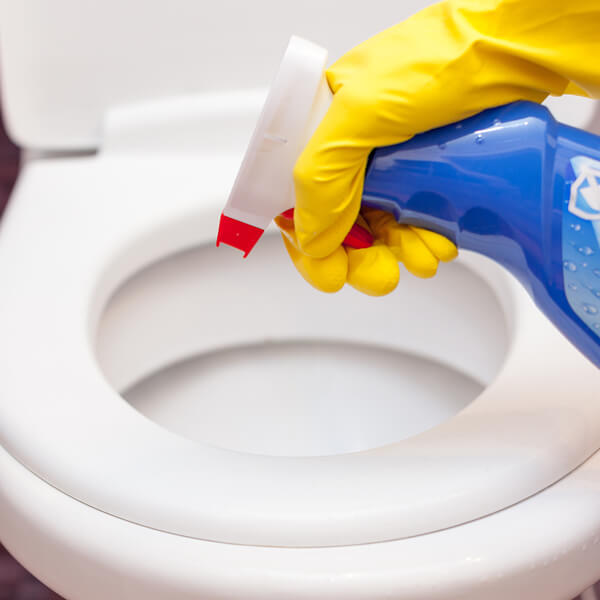
If the limescale hasn’t had a chance to build up to enormous levels, it’s mostly unsightly. It can discolor your toilet and leave behind some flaky areas around the seat and rim where the water may have splashed.
It can be a nuisance to have to continuously clean it off of these areas, and it can flake off on your hands when you lift the lid on the cistern or raise the seat of the bowl.
But is it actually harming your toilet if you let it build up?
A thin layer of limescale isn’t going to hurt anything besides the appearance of your toilet. The real issue is if you continue to let the limescale build up over time. That crust that the limescale produces will become harder. Rather than flaking off, it will become a thicker, more solid substance.
This substance can and will coat anything that the water comes in contact with. This includes not only the lid or the toilet seat, but also the internal workings of the toilet, such as where the water enters the cistern and where it exits the bowl. As the limescale builds up, it begins to narrow these areas, making it harder for water and waste to pass through. Eventually, the crust may also cause things like the float or tower in your cistern to stop working as well.
Your flush handle or button may not react as easily, and the toilet may no longer fill with water as quickly or flush as easily as it once did. This does take years to occur, but during this time, you’ll still notice that the toilet is flaky, discolored, and difficult to get and keep clean.
Thankfully, in most cases removing the limescale from the toilet will restore its function as well as its previous, pristine appearance. This is easiest to do if you only have a slight build up, when it’s still mostly a discoloration, but it can be removed even after it’s hardened into a crust.
How to Remove Limescale Discoloration from a Toilet
If the limescale build up on your toilet isn’t that bad, and it’s mostly discoloration and some flakiness at this point, it’s fairly easy to remove with plain white vinegar. This is best done on a day when you won’t be home for a while, or if you have a second toilet you can use, as this one will have to sit untouched for a while in order for the method to work.
Materials
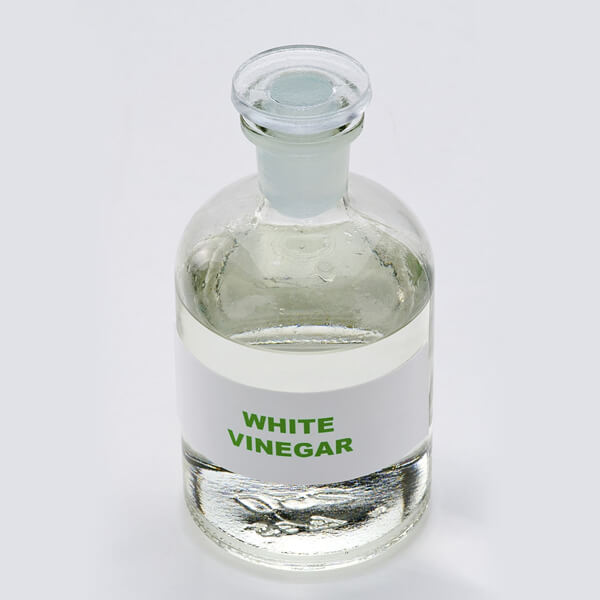 3 liters plain white vinegar
3 liters plain white vinegar
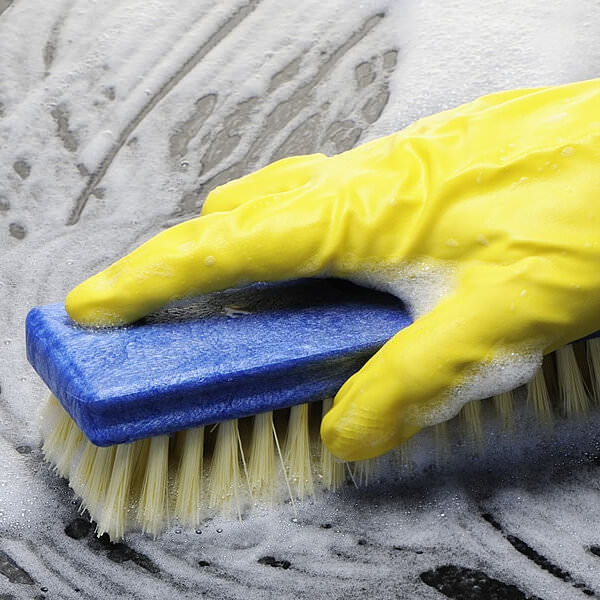 Scrub brush
Scrub brush
Instructions
- Turn off the water supply to the toilet and flush to remove as much water as you can from the cistern and the bowl.
- Pour 1 liter of white vinegar into the cistern tank, making sure to cover the mechanisms and flush apparatus as you pour.
- Pour 1 liter of white vinegar into the toilet bowl, making sure that you splash it around the sides of the bowl as you pour.
- Let the vinegar sit in the toilet untouched for 3 - 4 hours.
- Turn on the water to the toilet and allow the cistern to fill back up.
- Flush the toilet to rinse the vinegar and any dissolved limescale out of the cistern and bowl.
- Examine the toilet for remaining limescale.
- Take the remaining liter of vinegar and splash it on any remaining, stubborn stains.
- Scrub the remaining stains that have been covered in vinegar with the brush firmly to dislodge them.
- Let the vinegar sit for another hour, then flush the toilet again to rinse.
How to Remove Heavy Limescale Build Up from a Toilet
If you’re noticing heavy limescale buildup and decreased performance from your toilet either in poor filling, poor flushing, or slow emptying, then you may need to take additional steps to clean the toilet. Keep in mind, that you will still need the toilet to sit untouched for an extended period of time for this method to work, and that if you need to use the muriatic acid to finish the job, that you need to take steps to protect yourself from potential burns. If you feel unsure about using the acid yourself, some plumbers will offer this service for a fee.
Materials
 2 liters white vinegar
2 liters white vinegar
 Pumice stone
Pumice stone
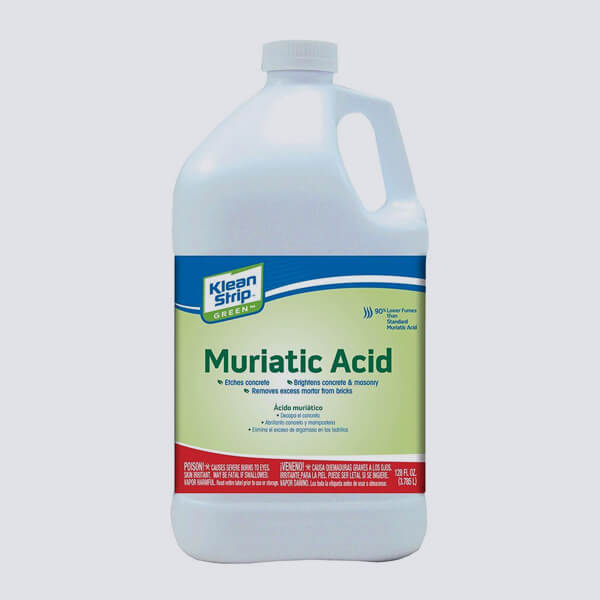 Muriatic acid
Muriatic acid
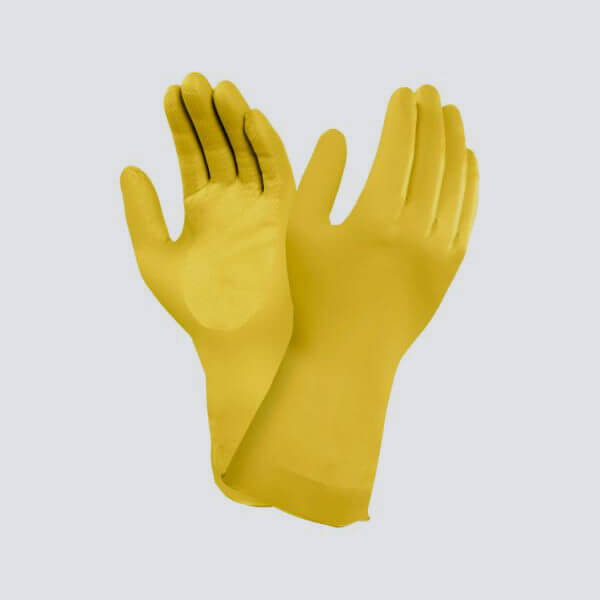 Protective gloves
Protective gloves
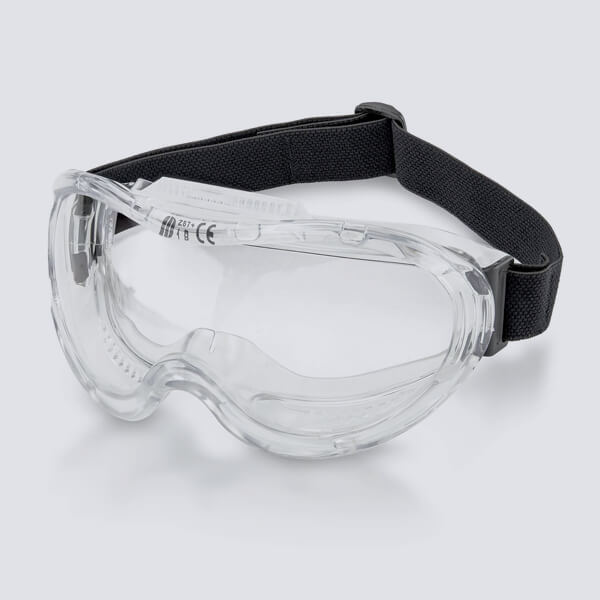 Protective eyewear
Protective eyewear
 Face mask
Face mask
Instructions
- Turn off the water to the toilet and flush to remove as much water as possible from the cistern and bowl.
- Pour 1 liter of white vinegar into the cistern, making sure to cover all affected areas as much as possible.
- Pour 1 liter of white vinegar into the bowl, making sure to cover all affected areas as much as possible.
- Let the vinegar sit undisturbed for 3 - 4 hours to allow it to soften the deposits.
- Wet the pumice stone with plenty of water and turn on the water supply to the toilet, allowing the cistern to fill up.
- Use the pumice stone to scrub at and break up the heavy deposits within reach on the toilet. Make sure to focus under the rim, around the flush actuator and any moving parts or connections.
- Flush the toilet to rinse and examine the areas you cleaned. If the toilet still has build up in areas you cannot easily reach with the pumice stone, and those areas are impacting the flush actuator, or the channels the water moves through, proceed to the next step. If the toilet is clean, rinse it again to be finished.
- Put on the mask, gloves, and protective eyewear. Following the instructions carefully on the label of the muriatic acid, dissolve roughly 1 tablespoon into the cistern and bowl.
- Allow the acid to sit for 10 - 15 minutes, then flush and wipe out the bowl to remove any remaining build up.
Preventing Limescale Return
An ounce of prevention is often better than the work necessary to deal with the issue once the limescale has begun to build up. As previously mentioned, a water softening system is the best way to combat hard water long term. However, it isn’t always feasible, especially for those who live in small homes or who live in apartments or multi-family homes.
You can still combat limescale build up on your toilet, however, and help prevent the need to scrub it out. Take these preventative steps once monthly to keep your toilet sparkling clean and prevent the limescale from taking hold.
Materials
 1 cup lemon juice or white vinegar
1 cup lemon juice or white vinegar
Instructions
- Pour 1 cup of lemon juice or white vinegar into the cistern and give it a quick mix to ensure it’s evenly distributed.
- Flush the toilet to allow the acidic water to make its way through the system, rinsing away the start of any limescale build up.
- Repeat once monthly to continue to keep the limescale at bay.
Have Your Water Tested
If you’re unsure of whether the discoloration and build up you see on your toilet and water appliances is limescale, you can have your water tested to determine its exact hardness level. This is a simple matter of collecting a small sample and having a company test it for you. Because limescale can impact your pipes, clothes, and dishes as well as your water appliances, if you have a continuing issue with the mineral, you may want to get your water tested to determine what your best course of action is to deal with it long term.
Keep Your Toilet Free of Limescale
Limescale is an unsightly discoloration at the best of times, and can cause leaks and flush actuator failings at the worst. Make sure that you keep your toilet free of limescale build up by following these steps. Once you have your toilet clean, continue to keep the limescale at bay with some simple prevention. It only takes a few minutes once a month to make sure that your toilet stays sparkling clean, and free from any lime. Keep your toilet and all your water appliances flowing freely and keep limescale out of your home.


